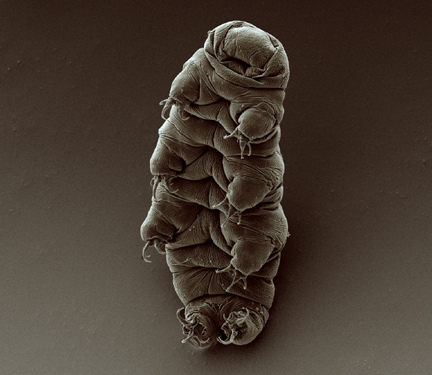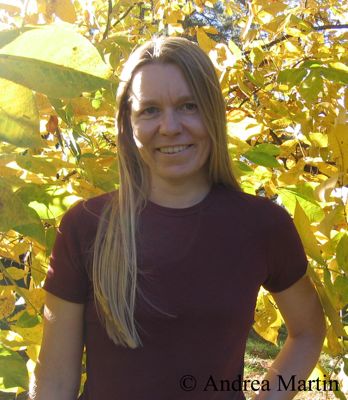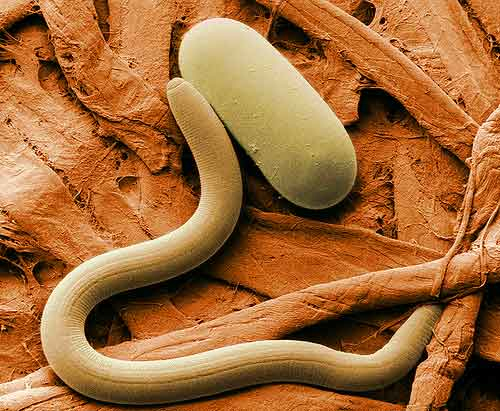 Creature from the underworld: Scanning electron micrograph of an adult water bear (tardigrade).Photo: Goldstein labCross-posted from Cool Green Science.
Creature from the underworld: Scanning electron micrograph of an adult water bear (tardigrade).Photo: Goldstein labCross-posted from Cool Green Science.
Water bears? Fungi that strangle worms? Roots that send off reconnaissance soldiers (that somehow report back)? There’s a world of bizarre organisms under our feet — millions of species that are also critical for life on Earth. Nature Conservancy scientist Sophie Parker specializes in soil ecology, and has just published a paper called “Buried Treasure: Soil Biodiversity and Conservation.” I recently asked her about her favorite soil critters and why we should care about what lives in the dirt.
Q. What kind of organisms are we talking about here? Worms? Rats? Microbes? Stuff that crawls away when you turn rocks over?
A. All those things and so much more. Soil organisms are very, very diverse, in terms of their position on the tree of life and also in terms of their body size. They can range in size from very large burrowing organisms (such as ground squirrels and gophers) down to actinomycete bacteria, which give soil its “earthy” smell.
Q. Is it peaceful down there, or is it Wild Kingdom underground?
A. It’s pretty vicious down there. Life as a soil bacterium is not an easy life. You are subject to drying out at any point in time. There’s patchiness in your food resources, so trying to get enough food is difficult. You’ve got these protozoa that are scavenging, like big grazers just waiting to suck you up and eat you. If you’re a pathogenic bacterium, you can try to attack a root, but there are all these things that the roots can do to defend themselves from you. If all this were blown up in size a million times, it would be very dramatic. It’s just that we humans can’t easily experience it.
Q. Do you have favorites?
A. I love water bears. These are organisms that are about 200 microns long, so about the size of a period at the end of a sentence in a book, really tiny but not as tiny as bacteria. They can survive extreme dessication, extreme heat, and extreme cold. They can even survive the vacuum of outer space. They look like little eight-legged bears with claws. They’re an example of charismatic microfauna.
 Sweating the small stuff: soil scientist Sophie Parker. Photo: Andrea MartinQ. What else?
Sweating the small stuff: soil scientist Sophie Parker. Photo: Andrea MartinQ. What else?
A. There are lots of examples. There are species of fungus that can trap nematode worms, and the way they do it is by creating a nooselike structure. The nematode worm digs its way through the soil, and when it intersects, when it goes through the loop, the fungus can feel it. The fungus then tightens the noose, strangles the worm, and eats it.
Q. Wow!
A. Here’s another one, a kind of reconnaissance troop for plant roots. As a root grows, it produces a layer of mucilage. It’s a slippery material that helps the root to glide through the soil, and as part of that layer, there are these little cells that slough off called “border cells.” The cells have the same genetic material as the rest of the plant, but they actually separate from the plant and move off into the soil and are still alive. They have been found to survive in the soil for long periods of time — on the order of weeks. Here’s the cool part: As they move off into the soil, they send information back to the root about the conditions in the soil.
Q. What are they saying?
A. Well, they could be telling the root which way to grow. We don’t know very well why roots grow the way they do. We know about the molecular triggers that make a root turn to the left or turn to the right, but we don’t know how well roots can sense their environment. Can they sense water from a distance away and grow towards it? These border cells are part of the answer to that question — they are kind of like foot soldiers that go out and investigate the soil and send information back about the condition to the root. But how those messages get back and forth is a mystery.
Q. Why is there all this diversity in soil?
A. Because the niches underground are both very, very small and very, very complex. You have huge gradients under the ground in temperature, in moisture, and in the availability of air, carbon, and nutrients. In everything that the organisms need to survive, there are huge gradients, and it is a constantly changing environment as rock is eroding and dead materials fall to earth and the microorganisms are decomposing it and creating soil. It’s the complexity that drives biodiversity — there are lots of different roles because there are so many things to do. There are so many ways to survive.
Q. It sounds like an alien war movie. But here’s the “So what?” question: Why should we care?
A. Because soils and the organisms they contain can have a large effect on biodiversity above ground. Let me give you an example. Mycorrhizal fungi — they are ubiquitous soil organisms found all over the world, on the roots of most plants. We’re just beginning to understand the relationships between these fungi and their plants. One mycorrhizal fungus species may cause one plant species to grow more, but it may cause another plant species to grow less, and so depending on the mix and match between fungi and plants, you get different outcomes for the plant community above ground.
This can have big, very important outcomes for conservation. There are some species of weedy plants, for example, that can take advantage of relationships with mycorrhizal fungi and become more successful than they would be otherwise.
 Madonna and child: a soybean cyst nematode with egg, photo taken with electron microscopy.Photo: Ethan Hein
Madonna and child: a soybean cyst nematode with egg, photo taken with electron microscopy.Photo: Ethan Hein
Q. How did you get interested in this stuff?
A. I studied nitrogen cycling in soils in California grasslands for my doctoral work. The first time I dug a soil pit was actually on Cape Cod in a forest ecosystem there. The amazing thing about digging a soil pit is each time you dig one, you don’t really know what you’re going to see. Each time is a different layering of colors and textures, and soils can be very beautiful, kind of like a layer cake as you’re digging down. You have no idea what it is going to look like until you begin to recognize patterns between plants and soils, because there are strong associations there. It’s always kind of a mystery.
Plus, it’s something that, in order to do it well, you have to be willing to get dirty, and that’s really appealing. It’s a lot of fun. It’s like making mud pies when you were a kid, you know?


